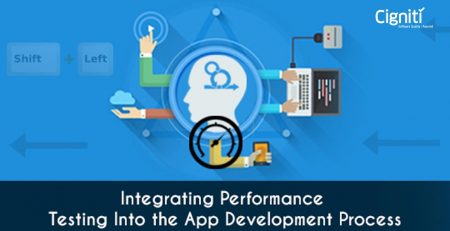‘What’ and ‘Why’ of moving from Performance Testing to Performance Engineering.
Global enterprises and brands have been working towards ensuring performance and functional excellence for their digital propositions. Implementing a robust Performance Testing strategy has been a conscious and strategic decision for all kinds of enterprises operating across diverse businesses. Today, validating and ensuring the speed, stability, and responsiveness of an application is absolutely business critical.
Various facets of Performance Testing have been adopted for the same, confirming that the application doesn’t vacillate under unforeseen conditions. However, there has been a shift in conceptual thinking, where the attention has shifted more towards Performance Engineering, from Performance Testing.
Performance Engineering refers to the techniques that are being applied in the development lifecycle, which ensure the non-functional requirements for performance. Some of the key requirements are ensuring throughput, latency, and usage of the memory. These features are needed to confirm and assess that the systems are user-friendly, secure, and scalable over even in the longer run. As recommended, Application Performance Engineering is a much needed practice for DevOps and Agile teams to validate efficiency of the applications.
The ultimate objective is to derive better business value for the organization through the overall development cycle. Moreover, it also ensures that the unforeseen cost of fixing a bug is not incurred towards the end.
Growing Significance of Performance Engineering
The rising recognition for Performance Engineering is due to the growing complications with new-age applications and the emerging technologies that are creating these multiple layers. Most of the applications today engage with multiple third-party vendors and parties to drive growth and innovation for the customers. Hence, it is no more a single activity driven growth, it just gets more and more complicated.
Any new feature and technology has to be built over the legacy system, which becomes a support system for the application. Hence, testing the application against these legacy systems becomes indispensable. These legacy systems have to be tested, as they need to meet the current performance parameters. It is highly critical to avoid any hiccups with the performance and stay prepared for any unforeseen circumstances. This needs Performance Engineering mind-set rather than a Performance Testing approach.
Performance engineering approach is needed to not only ensure flawless performance, but also to enable rapid application delivery. Today, enterprises and businesses need rapid turnaround and no delay in time to market. This can be made possible only when performance testing is engineered within the application development cycle. There is no chance that they can wait till the last moment to realize the issue and rectify it towards the end. Performance Engineering enables you to get it right the first time.
Within the Agile process, Performance Engineering methodologies can be effectively aligned with the ‘shift-left’ approach. This helps to address the performance issues way ahead in the development process. In this way, performance bottlenecks can be identified and reasons can also be found out too. Moreover, the overall system performance can be optimized in this process.
A well thought-through Performance Engineering and Testing strategy can enable teams to deal with the challenges that are being posed by inadequately performing applications. It helps in benchmarking the performance of the application and ultimately evaluating against business critical scenarios for effective performance testing. The digital sphere has innumerable aspects that keep challenging the application’s flawless functioning and expected performance parameters.
Digital Performance Engineering comprises mechanisms, processes, practices and tools, and applies engineering rules within the software development cycle to confirm that the application sustains the challenges posed by the digital landscape and fulfils the non-functional requirements.
For instance, when a financial application is designed, it is expected to deliver various tasks – traction with the merchant site for checking the products, social sharing for feedback on the product, checking the ratings for the product, and finally connecting with the bank for final payment. Performance Engineering is needed to ensure that all the functions converge to deliver the expected performance towards the end.
Cigniti’s Performance Engineering & Testing teams have extensive experience in providing cutting edge services to global clients. Cigniti’s Performance Testing expertise spans a wide range of applications including client-server, web, distributed, mobile, cloud databases, high volume transaction systems, and highly complex applications. Cigniti’s Performance Center of Excellence (PCoE) provides end-to-end performance testing solutions to help our clients launch future proof applications with high responsiveness, availability, and scalability.
Cigniti’s performance testing covers performance engineering, including capacity planning, baseline test, load, stress, endurance and benchmarking against competitors, production monitoring and consulting. Our thought process focuses on performing in-depth analysis at the component level, dynamic profiling, & capacity evaluation in addition to testing and reporting helping isolate bottlenecks and provide appropriate recommendations.





Leave a Reply